HPC Architectures
Main Feature of HPC Systems
- Processors - which can cooperate concurrently.
- Memory - which is local to, or shared by the processors.
- Network - interconnect between processors, which allows data sharing and
synchronisation.
A Taxonomy of HPC (Parallel) Architectures
- Single Instruction, Multiple Data (SIMD) Stream.
- Multiple Instruction, Multiple Data (MIMD) Stream.
- Distributed memory (DM).
- Shared memory (SM).
Single Instruction, Multiple Data (SIMD) Stream.
- Many, simple processing elements - 1000's.
- Each processor has its own local memory.
- Each processor runs the same program.
- Each processor processes different data streams.
- All processors work in lock-step (synchronously).
Examples of machines include Thinking Machine's CM-200, AMT-DAP, MasPar.
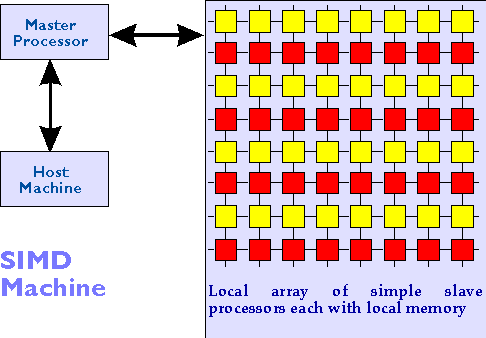
Single Instruction Multiple Data (SIMD) Stream SIMD Example
B(I) = A(I) * 4 => LOAD A(I), MULT 4, STORE B(I)
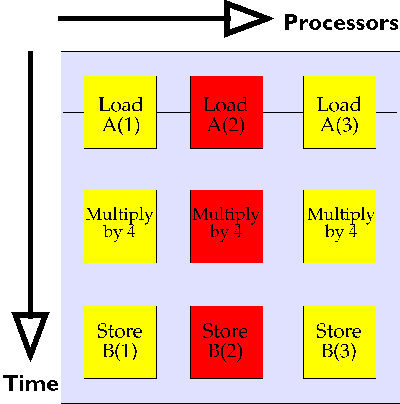
Multiple Instruction Multiple Data Stream (MIMD)
- Many processors (Alpha, SPARC, PowerPC, etc...)
- Each processor either has own, or accesses shared, memory.
- Each processor can run the same or different programs.
- Each processor processes different data streams.
- Processors can work synchronously or asynchronously.
Examples of machines range from Clusters of workstations to the Cray T3D.
Shared Memory MIMD
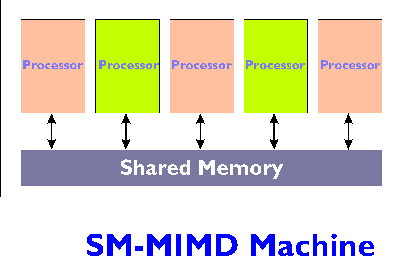
Distributed Memory MIMD
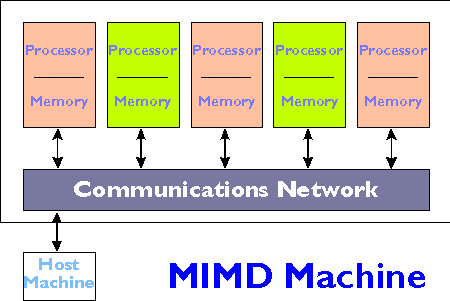
MIMD Example
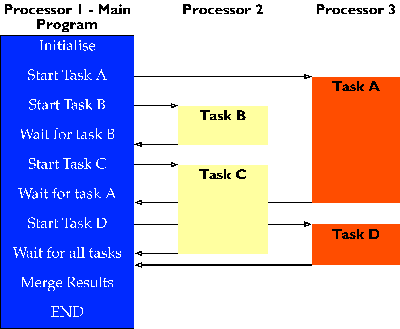
HPC Systems.
- Loosely Coupled (heterogenous networks of unix workstations):
- IBM/SGI/HP/Sun/DEC/... workstations.
- Interconnect by Ethernet (10 Mbit/s), FDDI (100 Mbit/s), ATM (155 - 622 Mbi$
- Modestly Coupled (distributed memory, 1-1024 processors
- Intel Paragon (i860), Meiko CS2 (SPARC), Cray T3D (Alpha)...
- Interconnect by custom networking technology (400 - 1000 Mbit/s).
- Tightly Coupled (shared memory, < 20 processors):
- Silicon Graphics PowerChallenge (MIPS 8000), Sequent Symmetry (x486), Cray C90...
- Interconnect by custom bus technology (200 - 400 Mbit/s).



Submitted by Mark Johnston
Last updated 6 April 1995





